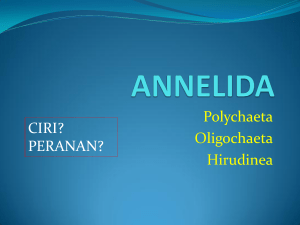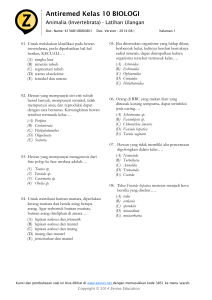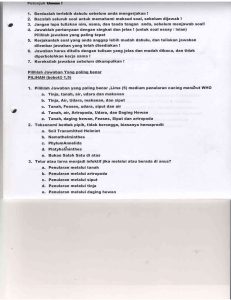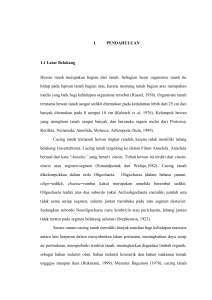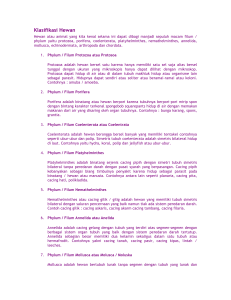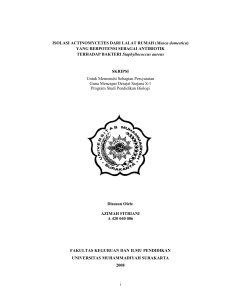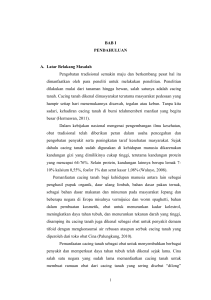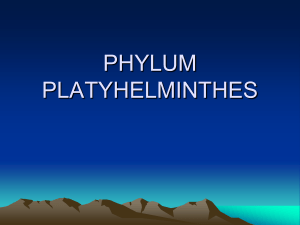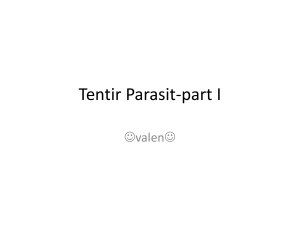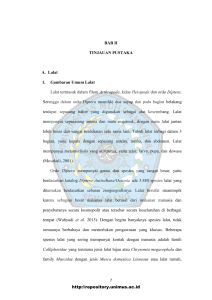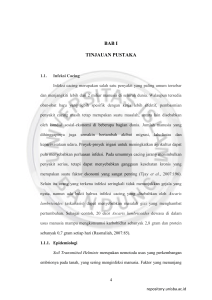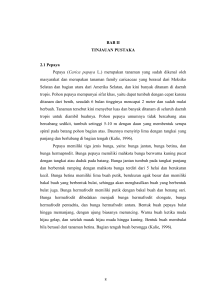identifikasi kepadatan lalat dan sanitasi lingkungan
advertisement
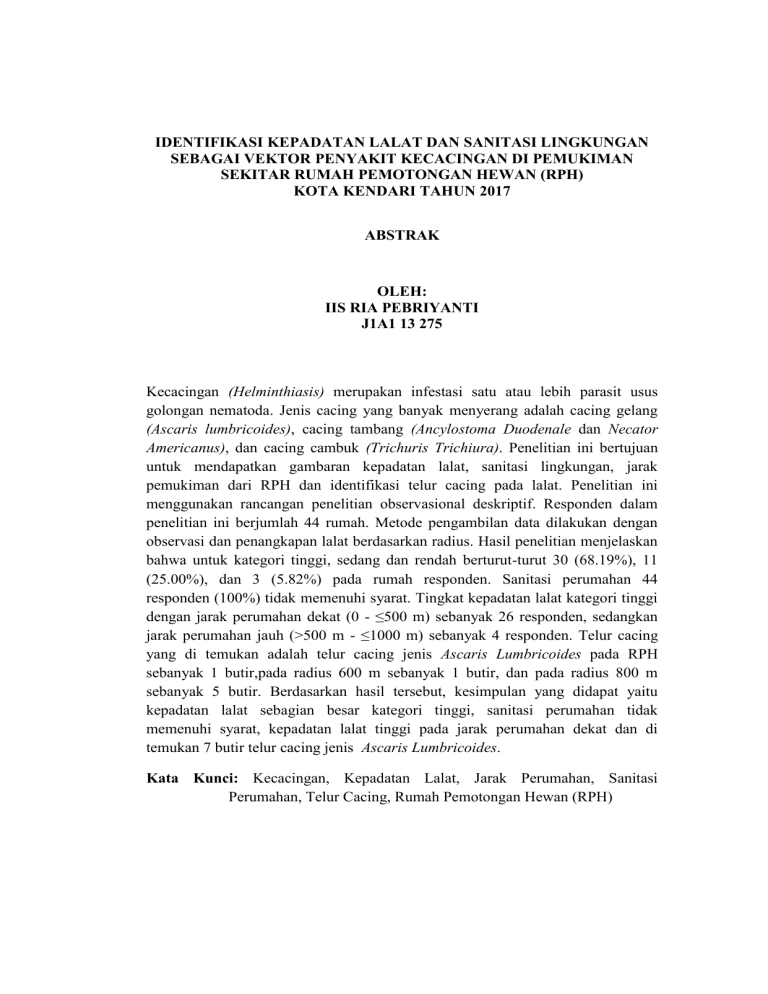
IDENTIFIKASI KEPADATAN LALAT DAN SANITASI LINGKUNGAN SEBAGAI VEKTOR PENYAKIT KECACINGAN DI PEMUKIMAN SEKITAR RUMAH PEMOTONGAN HEWAN (RPH) KOTA KENDARI TAHUN 2017 ABSTRAK OLEH: IIS RIA PEBRIYANTI J1A1 13 275 Kecacingan (Helminthiasis) merupakan infestasi satu atau lebih parasit usus golongan nematoda. Jenis cacing yang banyak menyerang adalah cacing gelang (Ascaris lumbricoides), cacing tambang (Ancylostoma Duodenale dan Necator Americanus), dan cacing cambuk (Trichuris Trichiura). Penelitian ini bertujuan untuk mendapatkan gambaran kepadatan lalat, sanitasi lingkungan, jarak pemukiman dari RPH dan identifikasi telur cacing pada lalat. Penelitian ini menggunakan rancangan penelitian observasional deskriptif. Responden dalam penelitian ini berjumlah 44 rumah. Metode pengambilan data dilakukan dengan observasi dan penangkapan lalat berdasarkan radius. Hasil penelitian menjelaskan bahwa untuk kategori tinggi, sedang dan rendah berturut-turut 30 (68.19%), 11 (25.00%), dan 3 (5.82%) pada rumah responden. Sanitasi perumahan 44 responden (100%) tidak memenuhi syarat. Tingkat kepadatan lalat kategori tinggi dengan jarak perumahan dekat (0 - ≤500 m) sebanyak 26 responden, sedangkan jarak perumahan jauh (>500 m - ≤1000 m) sebanyak 4 responden. Telur cacing yang di temukan adalah telur cacing jenis Ascaris Lumbricoides pada RPH sebanyak 1 butir,pada radius 600 m sebanyak 1 butir, dan pada radius 800 m sebanyak 5 butir. Berdasarkan hasil tersebut, kesimpulan yang didapat yaitu kepadatan lalat sebagian besar kategori tinggi, sanitasi perumahan tidak memenuhi syarat, kepadatan lalat tinggi pada jarak perumahan dekat dan di temukan 7 butir telur cacing jenis Ascaris Lumbricoides. Kata Kunci: Kecacingan, Kepadatan Lalat, Jarak Perumahan, Sanitasi Perumahan, Telur Cacing, Rumah Pemotongan Hewan (RPH) IDENTIFICATION OF FLIES DENSITY AND ENVIRONMENTAL SANITATION AS WORMY DISEASE VECTOR ON SETTLEMENT AROUND THE SLAUGHTERHOUSES OF KENDARI CITY IN 2017 ABSTRACT BY: IIS RIA PEBRIYANTI J1A1 13 275 Wormy disease (Helminthiasis) is one or more intestinal parasitic infestations in nematodes class. The types of worms that many attack are roundworm (Ascaris lumbricoides), hookworm (Ancylostoma duodenale and Necator americanus) and whipworm (Trichuris trichiura). This study aimed to get a description of the density of flies, environmental sanitation, distance of settlement from slaughterhouses and the identification of worm eggs among the flies. The type of study was an observational study design. Respondents in this study were 44 house. The data collection Method was conducted by observation and catching flies based on radius. The results of study showed that for the category of high, medium and low respectively 30 (68.19%), 11 (25.00%), and 3 (5.82%) on the respondent's house. Sanitary housing of 44 respondents (100%) was not eligible. The density of flies of high category with a close distance of housing (0 - ≤500 m) as many as 26 respondents, while far distances housing (> 500 m - ≤1000 m) as many as 4 respondents. The worm eggs that found were a kind of Ascaris Lumbricoides at slaughterhouses as many as 1 grain, at a radius of 600 m as many as 1 grain, and at a radius of 800 m as many as 5 grains. Based on these results, the conclusion obtained that the density of flies’ mostly in high category, housing sanitary did not qualified, flies density was high at near distance of housing and there was discovered 7 grains of worm eggs of Ascaris Lumbricoides species. Keywords: Helminthiasis, Flies Density, Housing Distance, Housing Sanitation, worm eggs, slaughterhouses
